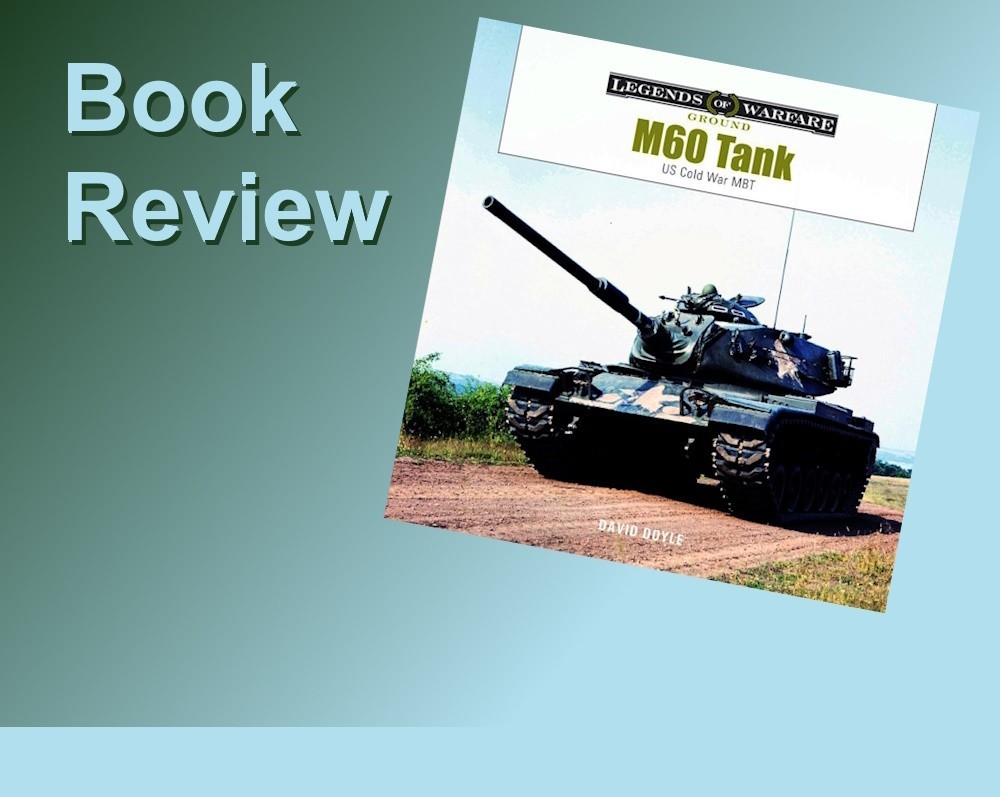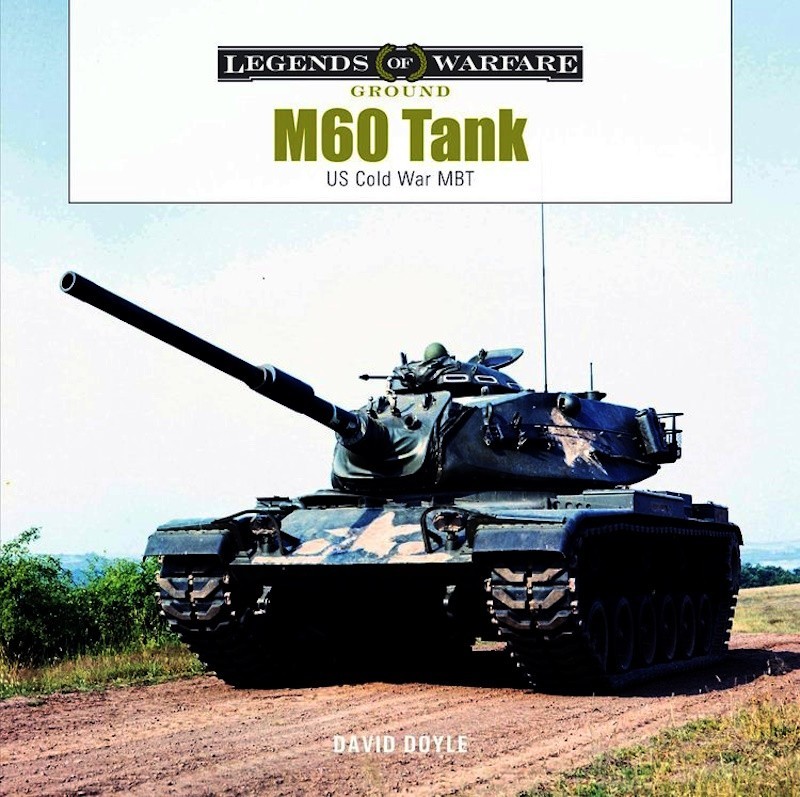
Introduction
M60 Tank: US Cold War MBT from David Doyle, part of Schiffer Publishing’s series "Legends of Warfare (Ground)." Modelers and historians should appreciate this pictorial book which chronicles the M60 through the M60A3, and other variants. This hardback book measures 9"x9", features 144 semi-gloss pages with 340 color or black-and-white photographs, and is catalogued with ISBN 978-0-7643-6781-6. Schiffer Publishing, Ltd. is the publisher and the book is also available at a discount from the author at DavidDoyleBooks.com.
Legends of Warfare is a series of books of standard size, layout, and range from 112 to 144 pages in length. They have a clean look to them and thus easy to read and learn from. Whether your interest is modeling, history or restoration, the focus is on the evolution and variant details of the M60. As the publisher writes:
This is the most comprehensive photo reference on the type, featuring 340 black-and-white and color images. The photos illustrate both the design features and the combat history of the tank. Specific chapters are designated for the M60, A1, A2, and A3 models, along with various auxiliary vehicles based on the M60 hull.
The genesis of David Doyle Books began while restoring military vehicles, while at the same time working in a hobby shop. Thus, his keen emphasis on what so many people of those communities value about his work.
Officially designated Tank, Combat, Full Tracked: 105-mm Gun, M60, the "Patton" first saw combat with Israel during the Yom Kippur war, and again with them in Lebanon in 1982. M60s returned to that fractured country for peacekeeping in Beirut with American forces in 1983, and two days after the horrible killing of 241 Marines by a terrorist bomb, M60s saw combat with Americans during Operation Urgent Fury in Granada. M60s played a significant role with USMC during Desert Storm, wracking up a 100-to-1 kill/loss ratio. In addition to Israel, M60s were operated to Egypt, Saudi Arabia, and two dozen other countries.
I see David Doyle Books widely praised as "must haves" and "go-to" sources by modelers. Let us explore why through this book.
Content
M60 Tank: US Cold War MBT is presented through five chapters:
Introduction
1. M60 (18 pages)
2. M60A1 (18 pages)
3. M60A2 "Starship" (20 pages)
4. M60A3 (15 pages)
5. M60 Derivatives (9 pages)
6. Field Use (60 pages)
Heavy semi-gloss pages contain the content. This book is a treasure trove of images from a whole tank to detailed shots focused on specific aspects of M60 versions. We learn of the designation of particular parts, i.e., the M50 and M51 periscopes, M105D telescope, and initial designations, i.e., the M60A2 was originally the M60A1E1. It also contains nuggets of minutiae such as Ordnance Committee Minutes numbers, dates, and terminology. (Do you know the term for the bulldozer blade in Army tech-manual terminology? This book reveals it.)
Introduction briefly summarizes the need to replace the M48 Patton after a Hungarian defector brought the West a new T-54A. Chapter M60 briefly (one page) introduces us to the beginning of the M60 design and initial deployment. The author identifies serial numbers of individual M60s, and notable dates and trivia for the M60 design. Although the rest of the chapter consists of photos, they are accompanied with informational captions which often include technical data and components, e.g., M29 cupola, fording kits, bulldozer blades, M17C rangefinder, cupola machine gun deflector, etc.
Next, M60A1 continues the survey of the tank's evolution. It covers the new turret, addressing its genesis, and improvements, whether visible or inconspicuous. We also learn of other changes (shock absorbers) . The size of the new turret is demonstrated in a photo of a turret rotated on its side, a welder sitting inside it. Captions provide tidbits of interesting data, i.e., turret traverse rates and gun elevation speeds between the original and new turrets. Other modifications and enhancements are mentioned, e.g., new air filters and new T142 tracks, explosive reactive armor (ERA), and includes new suffix acronyms (AOS, RISE). Modelers may be interested in the different patterns of ERA tiles. Several photos present clear looks at the tiles and mounting brackets; we are treated to seven interior views spotlighting the driver station, radio equipment, and turret.
The next chapter M60A2 covers the remarkable "Starship". It was the fruition of 1950s Army idea that missiles would supplant guns in tanks. We are introduced to the XM13 Shillelagh missile and the XM162E1 gun launcher, known as the XM81 Combat Vehicle Weapons System (CVWS) Shillelagh, standardized as the M162 152 mm gun-launcher. Like the previous and following chapters, in the spirit of "a picture is worth a thousand words," the author fortifies the text with hundreds of detailed photographs. A sampling of these are the track connectors, the turret hatch, vision blocks.
The proceeding overviews show the format and detail for each chapter, which continues with M60A3. We learn about upgrades such as the cannon thermal sleeve, laser rangefinders, crosswind detector, night sights and searchlights, smoke launchers, ballistic computers, and other improvements. Those developments begat new abbreviations and acronyms, e.g., RISE, M60A3 TTS. This chapter presents seven interior photos and 10 views of ERA among 26 looks at M60A3s.
M60 Derivatives points out that these mighty machines require a lot of special friends to function effectively. Specifically the AVLB bridging vehicle and the M728 CEV (combat engineering vehicle). Again, key dates and features are mentioned, as well as specialized equipment and components. Capabilities are presented, e.g., hoist ability of the A-frame boom of the CEV. Plenty of pictures!
The next 60 pages focus on Field Use. All versions of the M60 are shown in depot, testing, training, deployed, and in exercises, in several camouflage schemes. Over a dozen photos show M60s in or exiting landing craft. Fifteen photos capture M60s in Desert Storm.
Photographs and Graphics
I did not count the advertised 340 color and black-and-white photographs but I would not be surprised if there are a few more. The gallery is excellent, many being professionally exposed. Even amateur "grab shots" or "in-action" exposures are clear and well developed. If there are any that a fuzzy, they did not leave an impression. There are a few with deteriorating color, something common to Kodak films of the 1950s-70s, i.e., Kodak Kodacolor. Interesting images include:
- "XM81E2 Cannon, Gun-Launcher, 152 mm"
- Bridge-laying sequence
- Oxyacetylene gunfire simulators on the main gun
- M60s ferrying jeeps across a shallow river
- M60 being ferried on amphibious river-crossing equipment (ARCE)
- M60s patrolling the Czeck border with what appears to be a M114
- M60A1 in Wehrmachtesque squiggly camouflage
- Securing an M60 to a German railroad car
- Plenty of MERDC camouflage schemes.
One of the coolest scenes is a "Starship" charging across a beach after disembarking from a huge LARC-LX. Did you know M60s were deliberately pushed into the ocean off Florida to create a man-made reef? Four photos reveal that project. This book even includes several images of foreign M60s.
Artwork
Each illustration is a black-and-white line art unless noted.
Development: seven line art profiles of the:
- M48A2
- M60
- M60A1
- M60A2
- M60A3
- M728
- AVLB.
M60 and M60A1 planforms.
M60 and M60A1 comparisons: the tanks in profile and from behind; each turret profile compared.
Rear hull differences between M60A1E1/early M60A2, and late M60A2.
105 mm gun barrel with and without the thermal sleeve.
Tables
General Data presents 17 characteristics of the physical and performance of the tank, armament, and ammunition for the:
- M60
- M60A1
- M60A2
- M60A3.
Engine Data presents five points of performance for the Continental AVDS-1790-2.
"Starships" - M60A2
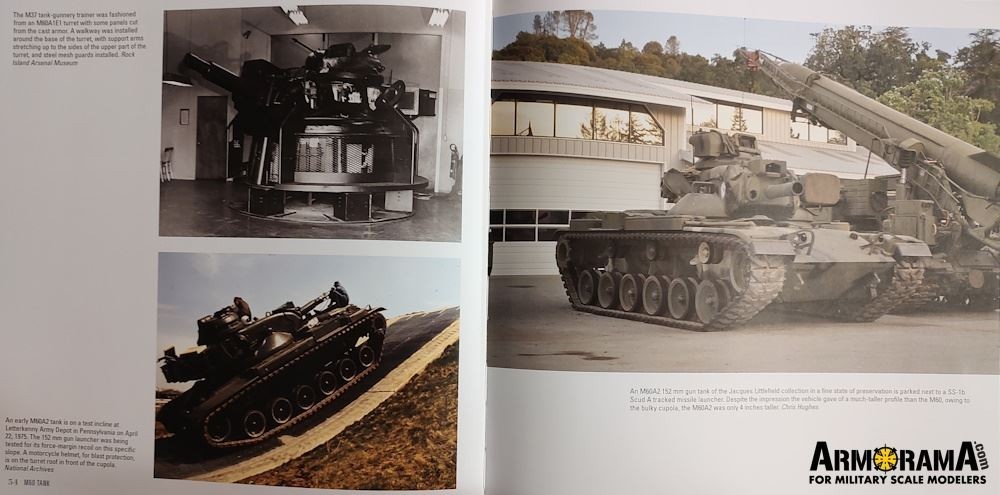
Driver, Gunner, and Commander's Cupola views


In Harm's Way
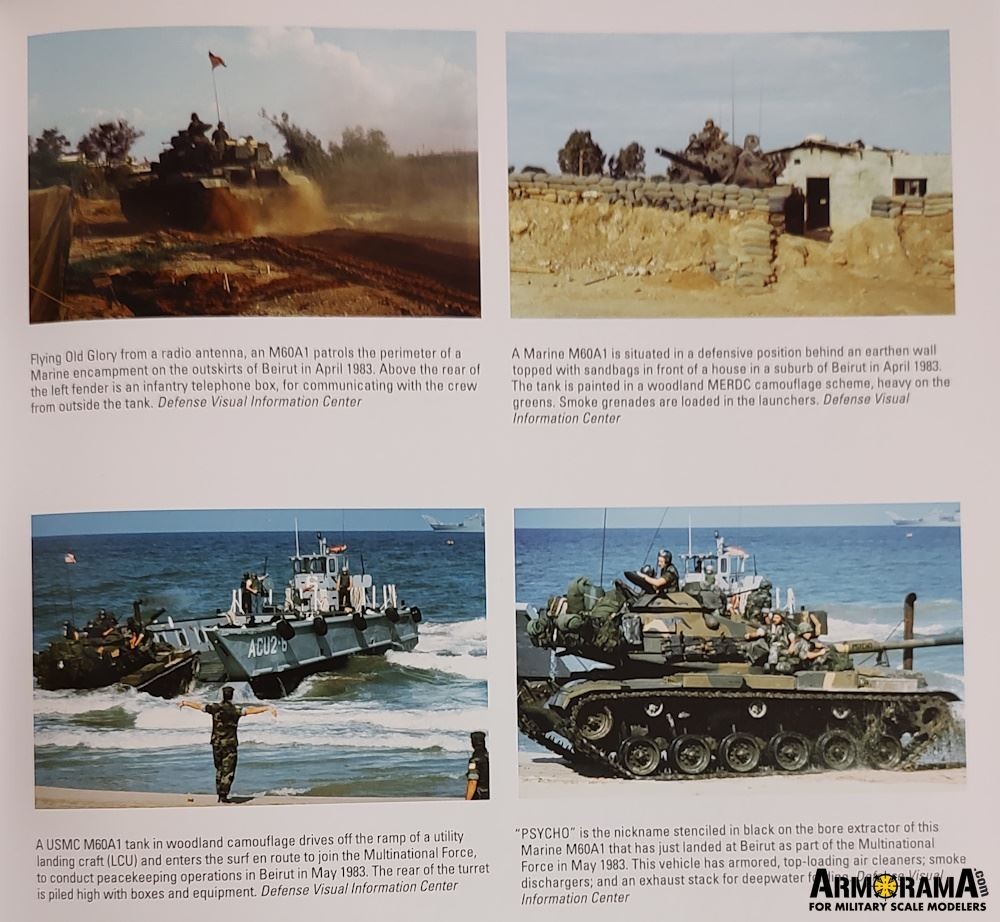
Eygpt to Kentucky
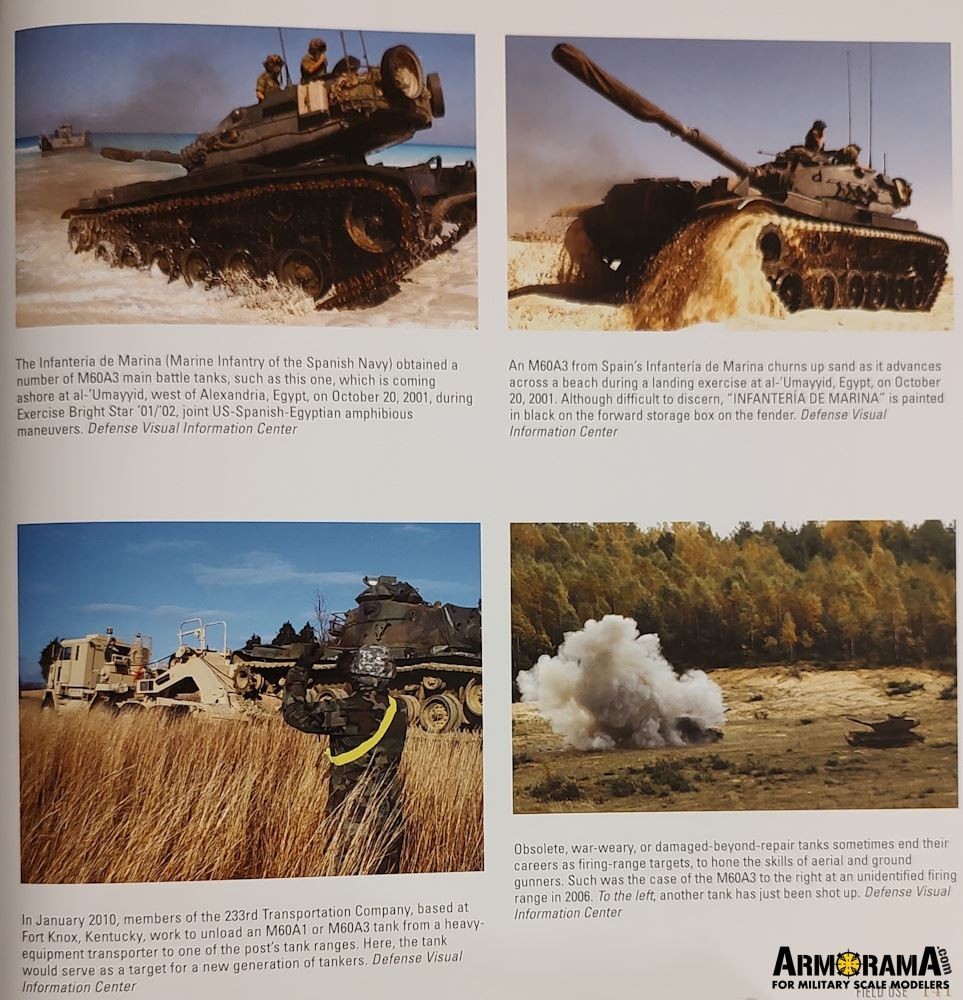
Reforger '83

Fording 'Dozer Tank
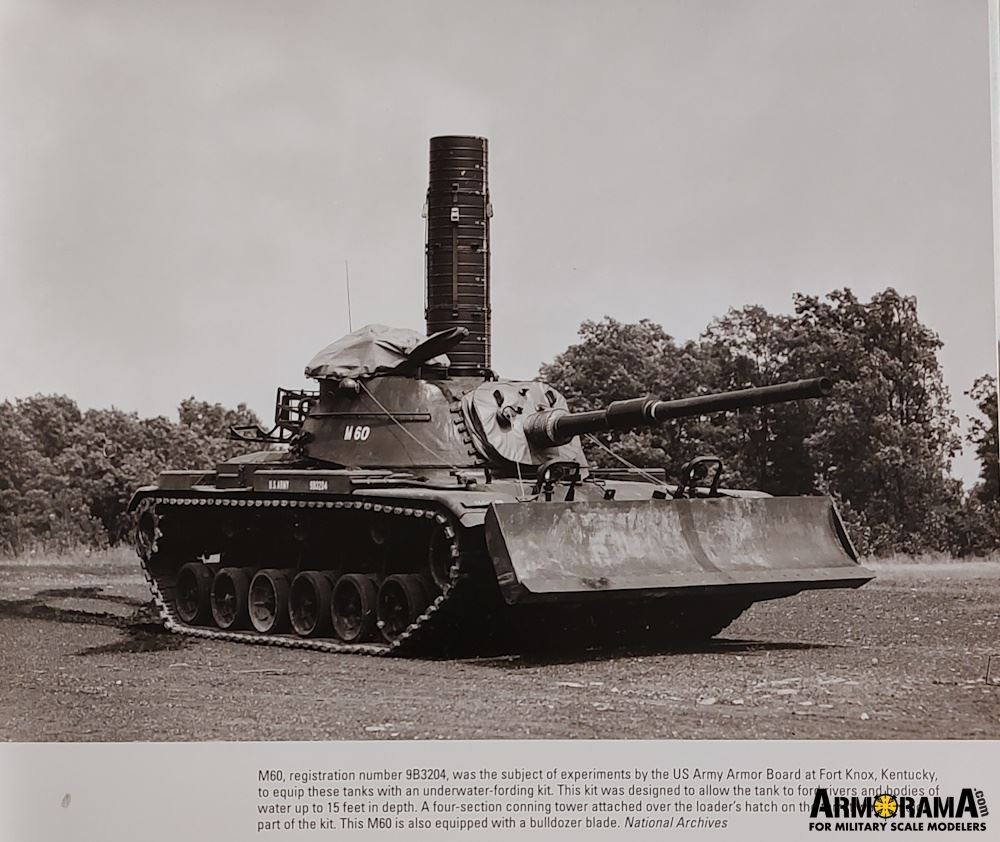
Conclusion
In M60 Tank: US Cold War MBT, I see why David Doyle Books are widely praised as "must haves" and "go-to" sources by modelers. Reviewing several of them, I understand why they are so highly valued. Modelers and historians of the M60 family will no doubt find a treasure trove of reference material and creative inspiration in this book. The text and captions can expand one's knowledge of components and aspects of the variants, assisting modelers to correct, improve, and enhance their M60 models.
This book will be by my side when I build an M60 and I think you will find it an essential reference, too. Recommended.
Please remember to mention to David Doyle Books and retailers that you saw this product here - on Armorama.











